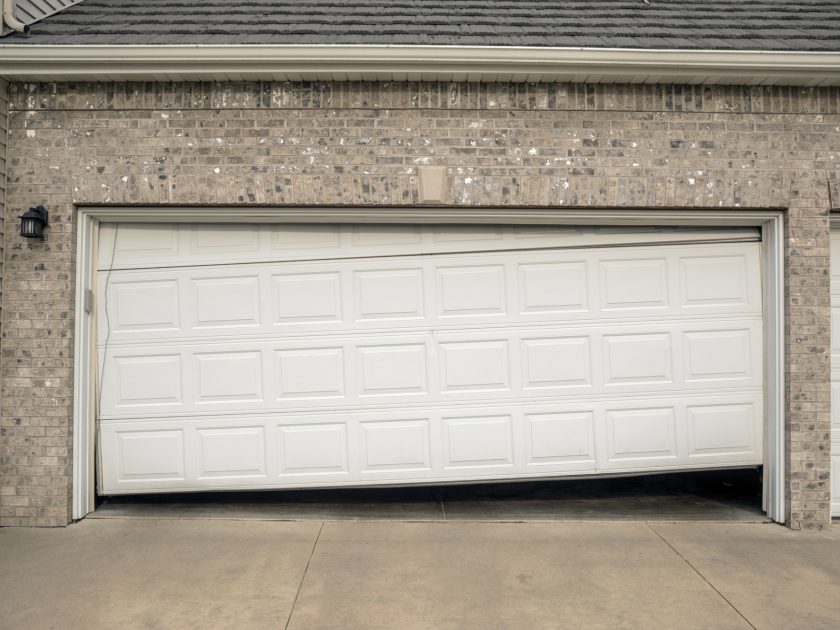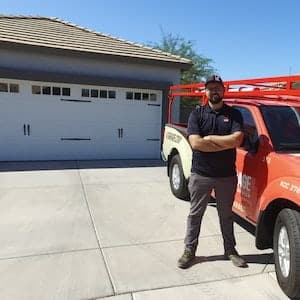Garage Door Service Professionals Offering High-Quality Maintenance Solutions
Garage Door Service Professionals Offering High-Quality Maintenance Solutions
Blog Article
Typical Garage Door Issues and Exactly How to Deal with Them
Garage doors are crucial for both security and ease, yet they usually offer a selection of common issues that can discourage property owners. Issues such as extreme sound throughout operation, doors that stop working to open up or shut, misaligned tracks, and malfunctioning remotes can develop without warning. While some concerns may show up straightforward to deal with, others might need an extra nuanced understanding of garage door mechanics. Attending to these issues properly not just improves capability but likewise extends the life of the door. One may wonder what steps are needed to tackle these challenges successfully.
Noisy Garage Door Procedure
A loud garage door operation can be a considerable resource of inconvenience for property owners, frequently showing underlying mechanical concerns. Such interruptions may come from various causes, consisting of worn-out rollers, loose equipment, or insufficient lubrication. Determining the resource of the noise is critical for effective resolution.
One common reason of extreme noise is the existence of rustic or worn-out rollers. Gradually, these elements can weaken, resulting in grinding or squeaking sounds as the door moves. Normal evaluation and substitute of these rollers can substantially lower noise degrees. In addition, loose bolts or screws in the door device can produce rattling noises throughout operation. Tightening up these fasteners guarantees a more stable and quieter movement.
Another adding aspect is insufficient lubrication of the door's relocating components. Using a high-grade lube to the tracks, springs, and rollers can substantially diminish friction and sound. Home owners must perform this upkeep occasionally to maintain optimum efficiency.
Lastly, the garage door opener may additionally produce sound due to its age or mechanical concerns. If the noise lingers regardless of addressing various other aspects, speaking with a professional for an extensive inspection and prospective repair might be essential.
Door Won't Open or Close
Experiencing a garage door that will not open up or close can be exceptionally discouraging and frequently signals a malfunction within the system. Several variables can contribute to this problem, and recognizing the source is vital for reliable resolution.

Next, check the security sensing units situated at the base of the door. These sensors can end up being misaligned or obstructed by particles, avoiding the door from running properly. Clean the sensing units with a soft fabric and guarantee they are aligned.
In addition, the garage door's inner elements need to be reviewed. Problems such as a busted springtime, worn-out rollers, or a harmed opener can hinder activity. If any type of elements appear to be harmed, it might be advisable to speak with a professional for fixings.
Misaligned Tracks
(Skilled Technicians)Misaligned tracks can significantly disrupt the smooth procedure of a garage door, leading to functional failings such as unequal movement or complete immobilization. This issue commonly emerges because of a selection of variables, including damage, unintended effects, or incorrect installation. When the tracks are misaligned, the rollers can stagnate openly, which not just stresses the electric motor but additionally positions safety and security dangers.
To recognize misalignment, aesthetically inspect the tracks for voids or uneven spacing. If you observe any type of discrepancies, it is crucial to deal with the issue promptly - garage door service. Begin by loosening the screws that protect the track to the wall, permitting adjustments. Meticulously touch the track back into its appropriate position making use of a rubber club or a comparable device, guaranteeing it is straight and degree.
When the positioning is fixed, retighten the screws to safeguard the track. For a much more irreversible solution, think about enhancing the tracks with additional brackets. Regular upkeep, consisting of cleaning up the tracks and making certain rollers remain in great problem, can stop future misalignments. By addressing misaligned tracks without delay, you can restore the performance of your garage door and enhance its longevity.
Broken Springs
Amongst the different elements of a garage door system, busted springtimes are just one of the most common concerns that can considerably hamper its functionality. Garage door springs are important for stabilizing the weight of the door, allowing for smooth opening and closing. When a spring breaks, it can cause a door that is hard to run or, in some instances, completely unusable.
There are 2 primary sorts of springs: torsion springs, which are mounted over the door, and expansion springs, discovered on either side. Indicators of a broken spring include a door that won't open, a visible gap in the springtime, or a loud noise during procedure. Attempting why not check here to run a garage door with a busted spring can trigger more damage to the door or the opener.
Repairing broken springs is not a do it yourself job; it needs specialized tools and proficiency due to the high tension entailed. It is suggested to speak with a specialist specialist that can securely replace the springs and ensure the door is effectively balanced. Regular maintenance and evaluations can assist prevent springtime failures and expand the lifespan of the garage door system.
Push-button Control Issues

If the remote still fails to run, inspect the garage door opener to make sure that its sensors are tidy and unobstructed. Dust, debris, or misalignment may prevent the signal transmission in between the remote and the opener.
Interference from various other electronic tools can also hamper remote capability. Make certain that close-by tools, such as wireless routers or cordless phones, are not triggering disruptions. garage door service. If disturbance is suspected, try relocating these devices additionally far from the garage door opener
In many cases, the remote might require to be reprogrammed. Seek advice from the supplier's standards to reset the remote and synchronize it with the garage door opener. If all else falls short and the remote proceeds to malfunction, consider getting in touch with a specialist specialist for an extensive evaluation and prospective substitute of the remote or opener.
Final Thought
(Premium Service)In summary, common garage door problems can dramatically affect functionality and security. Addressing noisy operation entails lubrication and tightening equipment, while problems with opening or closing require evaluation of source of power and sensing units. Misaligned tracks can be remedied with change, although broken springs necessitate expert treatment. Remote breakdowns normally develop from weak batteries or disturbance, which can be resolved via substitute or reprogramming. Positive upkeep and prompt repairs can guarantee ideal efficiency and longevity of garage doors.
Report this page